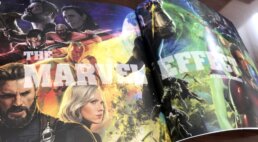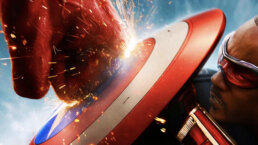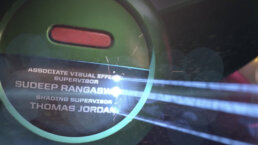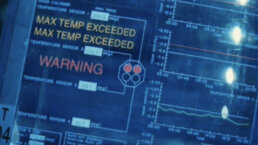In April 2018, ahead of the eagerly anticipated release of The Avengers: Infinity War, Cinefex dedicated a full issue to celebrating the first 10 years of Marvel Studios. In this retrospective issue, I was honored to be included in a roundtable discussion with the visual effects leaders from the Marvel films, and other fellow studio owners and artists that have collaborated over the years with the Marvel Studios leadership. Below are my full answers to all the questions.

1. WORKING WITH MARVEL STUDIOS
In your view, what is unique about working on a Marvel Studios film?
Marvel has been creating such a rich and deep universe for decades; the recent film universe is just getting warmed up. The Cinematic Universe’s success is partially due to the genius of these characters and storylines conceived years ago and marrying that with a simply brilliant executive team whose leadership and filmmaking skills can finally bring these stories to life in all their glory as they were intended to be. The complexity of the Marvel Universe goes well beyond just creating new superheroes with unique powers; it’s built on universal laws and scientific principles that tie everything together and governs these mythologies.
As an avid collector, Marvel Comics could be appreciated on a multitude of levels, from the purely visual to the often profound and complex storylines told through voice balloons and narration panels. And what stories they were! Stories of wonder, stories to stir the imagination, stories that asked what if? Stories that opened the mind to worlds beyond our own and other universes and dimensions that housed beings whose power went “beyond human comprehension.” These stories were grounded in real world trials and tribulations of unlikely heroes, cursed heroes, heroes that didn’t want the responsibility—and that’s one of the many reasons these characters were so relatable.
—-
2. SHOWCASE YOUR WORK
Name a film(s) from the list.
Now name a sequence(s) or effect(s) that best showcases your work on that film.
- What was the challenge?
- Describe how you went about meeting the challenge:
- Creatively?
Technically?
One of the first pieces of design we ever created for a Marvel Studios film was Tony Stark’s glass smartphone he used in Iron Man 2. The phone was a very important storytelling device for the pivotal courtroom scene, when Tony is hacking into Hammer Industries presentation. The audience needed to follow along with his gestures on the phone, understanding exactly what he was doing and why. Above all else, it had to be a distinctly Stark Tech User Interface Design. We actually designed a rough animated prototype exploring a range of possibilities for a Stark Transparent Glass Smart Phone.
In discussions with Jon Favreau and Janek Sirrs, they wanted this device to be a smartphone 5-7 years ahead, not 20 or 30. The audience wouldn’t buy anything too far fetched—it’s that sweet spot in between the current technologic climate and the distant future that creates the most believability.
One of the other challenges, was that Robert Downey Jr.’s improvised gestures were already filmed with a glass phone prop, so we had to design an interface and a user flow that made logical sense of his seemingly random tapping and circular thumb movements. Essentially, retrofitting a UI design into the user’s existing actions. In the end, it all came together beautifully and allowed the audience to follow along with every move of Tony’s fingers and the interface progression as the scene unfolded.
—–
3. INNOVATION
What notable new technique(s) did you develop during the first 10 years of the Marvel Cinematic Universe
One of the most important elements of our process is research and investigation of current scientific breakthroughs and technological innovations that inspire the tech concepts and user interface designs we propose to Marvel Studios. It’s very important to us and the MarvelStudios team that the ideas we present have some basis and grounding in reality. So the more homework and studying we do around these technology breakthroughs, the more thought out and deeper the final design solution becomes. It also creates a deeper believability and authenticity with audiences and fans.
—-
4. WHICH SUPERHERO ARE YOU?
If you could be a Marvel character, who would it be? Why?
The Incredible Hulk, hands down. Growing up in the70s, I became a huge fan of Marvel Comics and the live action Incredible Hulk with Bill Bixby and Lou Ferrigno, at the same time. Each fed the other, the moreI watched the show, the more I collected Hulk issues, magazines, memorabilia,toys, shirts, pez dispensers—you name it. My dog is even named Bixby!
Jeremy Lasky
An entrepreneur and creative leader, Jeremy Lasky started his career at R/GA right after graduating from Carnegie Mellon University where he studied Graphic Design, Architecture and Business. For 5+ years he lead design efforts for feature films, global ad agencies and broadcast networks. In the Fall of 2001, Lasky co-founded Perception, a cutting edge motion graphics studio that lead the revolution in creating groundbreaking design and visual effects on the desktop. Now in it's 18th year, the studio has sharpened its focus to become global experts in designing futuristic UIs for both feature films and for the most powerful brands in technology. From Iron Man to IBM, from The Avengers to SpaceX, the studio has an extremely unique niche that truly bridges the gap between science fiction and science fact. Lasky leads new business strategies, shapes the company’s growth, while overseeing a full-time staff of 15.
Lasky has been a keynote speaker and presenter at: Promax 2016, Disney Art Summit, Disney Creative Loop Series, Science of Team Science Conference, Biogen Techology Innovation Symposium, TV of Tomorrow Conference, and Razorfish's Global Creative Summit. Lasky has lectured on design and guest speaker at OTIS, SCAD, Carnegie Mellon’s ETC and NYU ITP. He's also given presentations and workshops at some of the biggest tech giants in the world including Samsung, IBM, SpaceX, Intel, Microsoft, GE, Yahoo, Audi, Mercedes, Ford, Chrysler, Visa and Apple.
Lasky’s work has been featured in dozens of design and industry publications and he has garnered many of the most prestigious awards in the design world including AIGA, The Art Director’s Club, Broadcast Design Association/Promax, CLIO, International Andy Awards, Monitor Awards, New Media Invision Awards, One Show Awards, The Charleston International Film Festival Awards, Telly Awards, and The Type Directors Club.


